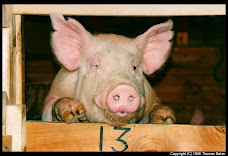In all my advertising classes, whenever I'm called upon to create an ad or campaign, my knee-jerk reaction is to think of how the product appeals to me personally. If it's something I have little interest in, like a credit card company, or life insurance policy, I try to think of ways to present the product that I would relate to. The result has gotten me into some sticky situations.
Every time I start thinking along those lines, I'm breaking one of the cardinal rules of advertising: Never assume your audience has the same likes and dislikes as you. YOU are not the audience, THEY are; and often THEY don't have anything in common at all with YOU. While some ad campaigns may not resonate with a particular audience, another audience may react completely different.
Check out this website on AdAge.com that listed the 15 most successful brands with the baby boomer demographic; Frankly, it was a reality check. these products hold very little appeal with millennials (like me.) Most of the brands on the list have existed for a long time. Names like Slinky and The Beatles have nostalgic value to this demographic, which implies that this marketing technique would be successful with boomers.
This really illustrates how effective audience segmentation can be. If Levi's ran the same advertisements for millennials that they ran for baby boomers, sales would suffer tremendously. Instead, companies like Pepsi create separate advertisements for specific demographics, and then air them on media that is familiar to the demographic. The next time you really like an advertisement, think about how the ad was created. More than likely, it was created with your demographic in mind!

1 comment:
Very interesting! I feel the same way when creating headlines and such so its good to know im not alone.
Post a Comment